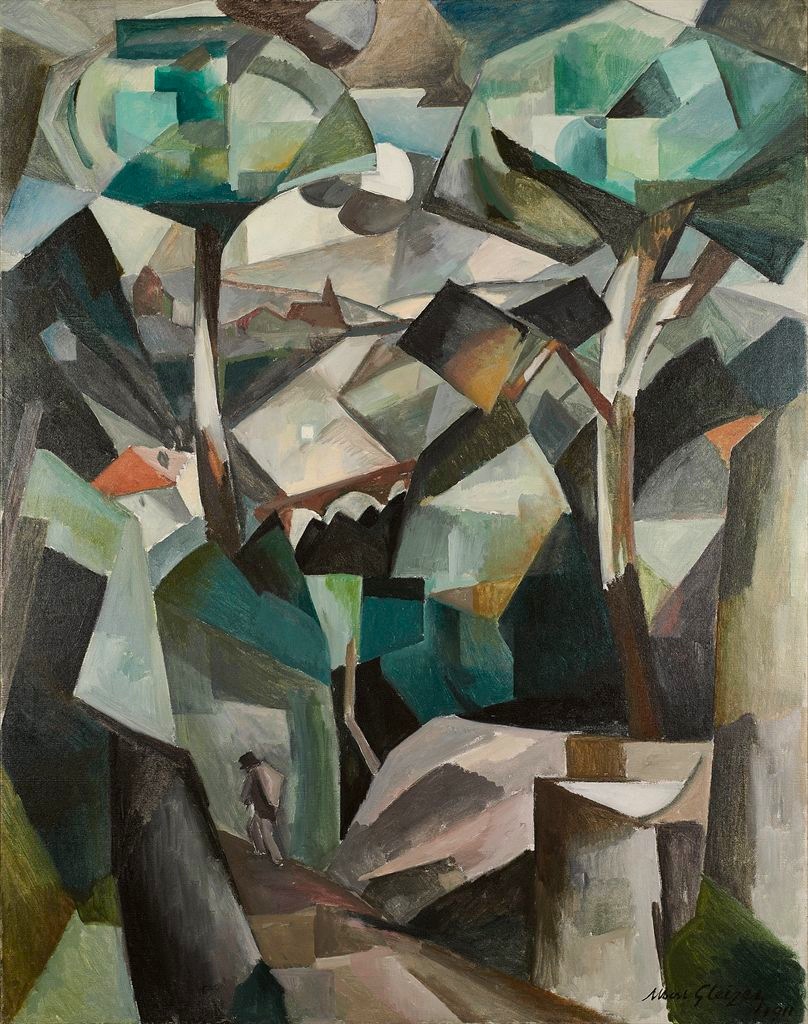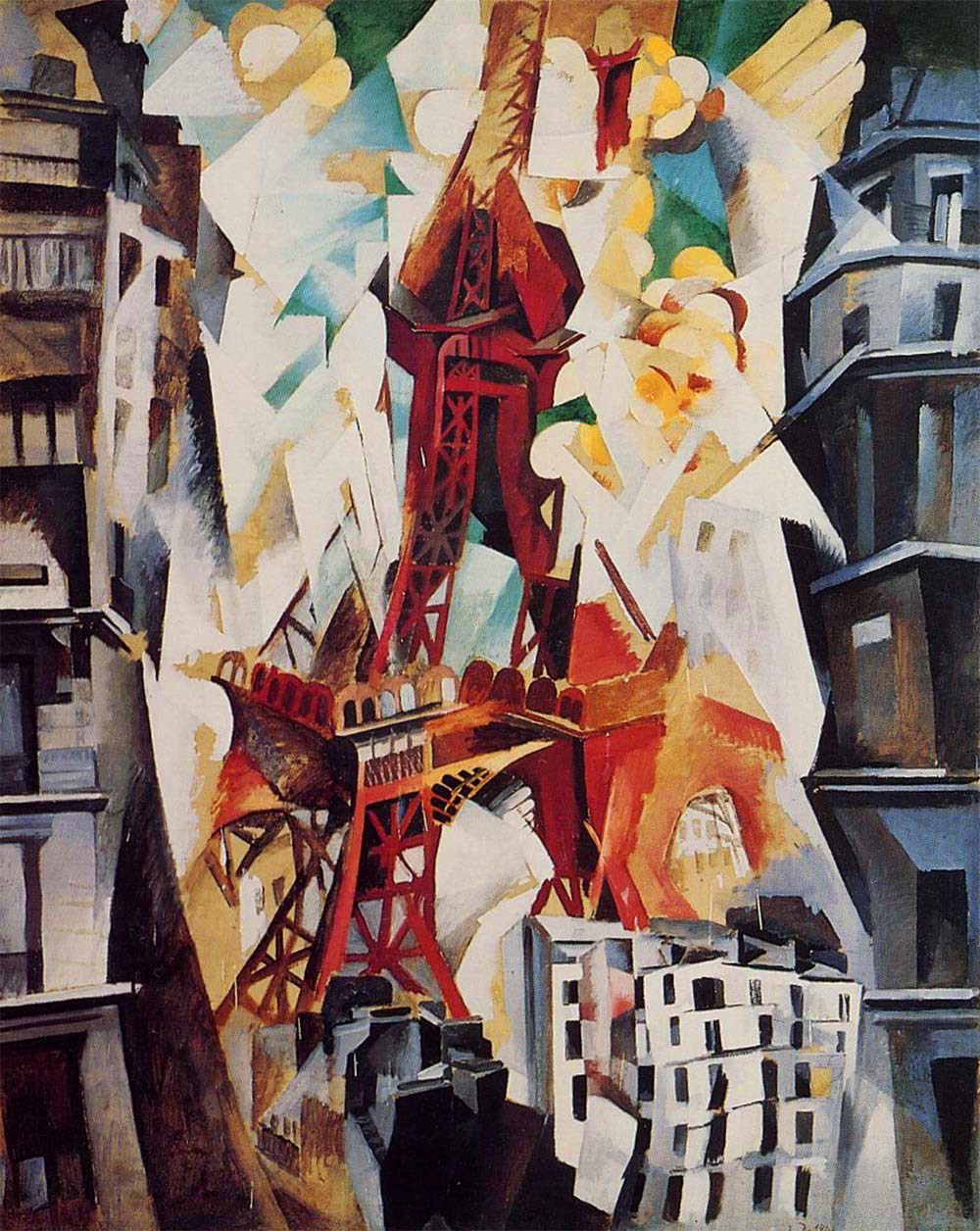|
Portrait Of Jacques Nayral (Gleizes)
''Portrait of Jacques Nayral'' (also known as ''Portrait de Jacques Nayral'') is a large oil painting created in 1911 by the French artist, theorist and writer Albert Gleizes (1881–1953). It was exhibited in Paris at the Salon d'Automne of 1911 (no. 609), the Salon de la Section d'Or, 1912 (no. 38), and reproduced in ''Du "Cubisme"'' written by Jean Metzinger and Albert Gleizes in 1912, the first and only manifesto on Cubism. Metzinger in 1911 described Gleizes' painting as 'a great portrait'. ''Portrait of Jacques Nayral'', one of Gleizes' first major Cubist works, while still 'readable' in the Figurative art, figurative or Representation (arts), representational sense, exemplifies the mobile, dynamic fragmentation of form characteristic of Cubism at the outset of 1911. Highly sophisticated in theory and in practice, this aspect of simultaneity would soon become identified with the practices of the Section d'Or. Here, Gleizes deploys these techniques in a radical, personal and ... [...More Info...] [...Related Items...] OR: [Wikipedia] [Google] [Baidu] |
Albert Gleizes
Albert Gleizes (; 8 December 1881 – 23 June 1953) was a French artist, theoretician, philosopher, a self-proclaimed founder of Cubism and an influence on the School of Paris. Albert Gleizes and Jean Metzinger wrote the first major treatise on Cubism, ''Du "Cubisme"'', 1912. Gleizes was a founding member of the Section d'Or group of artists. He was also a member of ''Der Sturm'', and his many theoretical writings were originally most appreciated in Germany, where especially at the Bauhaus his ideas were given thoughtful consideration. Gleizes spent four crucial years in New York, and played an important role in making America aware of modern art. He was a member of the Society of Independent Artists, founder of the Ernest-Renan Association, and both a founder and participant in the Abbaye de Créteil. Gleizes exhibited regularly at Léonce Rosenberg's ''Galerie de l’Effort Moderne'' in Paris; he was also a founder, organizer and director of Abstraction-Création. From the mid-1 ... [...More Info...] [...Related Items...] OR: [Wikipedia] [Google] [Baidu] |
Symbolism (art)
Symbolism was a late 19th-century art movement of French and Belgian origin in poetry and other arts seeking to represent absolute truths symbolically through language and metaphorical images, mainly as a reaction against naturalism and realism. In literature, the style originates with the 1857 publication of Charles Baudelaire's ''Les Fleurs du mal''. The works of Edgar Allan Poe, which Baudelaire admired greatly and translated into French, were a significant influence and the source of many stock tropes and images. The aesthetic was developed by Stéphane Mallarmé and Paul Verlaine during the 1860s and 1870s. In the 1880s, the aesthetic was articulated by a series of manifestos and attracted a generation of writers. The term "symbolist" was first applied by the critic Jean Moréas, who invented the term to distinguish the Symbolists from the related Decadents of literature and of art. Etymology The term ''symbolism'' is derived from the word "symbol" which derives from ... [...More Info...] [...Related Items...] OR: [Wikipedia] [Google] [Baidu] |
Unanimism
Unanimism (French: ''Unanimisme'') is a movement in French literature begun by Jules Romains in the early 1900s, with his first book, ''La vie unanime'', published in 1904. It can be dated to a sudden conception Romains had in October 1903 of a 'communal spirit' or joint 'psychic life' in groups of people. It is based on ideas of collective consciousness and collective emotion, and on crowd behavior, where members of a group do or think something simultaneously. Unanimism is about an artistic merger with these group phenomena, which transcend the consciousness of the individual. Harry Bergholz writes that "grossly generalizing, one might describe its aim as the art of the psychology of human groups". Because of this collective emphasis, common themes of unanimist writing include politics and friendship. The primary unanimist work is Romains's multi-volume cycle of novels ''Les Hommes de bonne volonté (Men of Good Will)'', the ideas in which can be traced back to ''La vie unanime''. ... [...More Info...] [...Related Items...] OR: [Wikipedia] [Google] [Baidu] |
Galeries Dalmau
Galeries Dalmau was an art gallery in Barcelona, Spain, from 1906 to 1930 (also known as Sala Dalmau, Les Galeries Dalmau, Galería Dalmau, and Galeries J. Dalmau). The gallery was founded and managed by the Symbolist painter and restorer . The aim was to promote, import and export avant-garde artistic talent. Dalmau is credited for having launched avant-garde art in Spain.Mark Antliff and Patricia Leighten, ''A Cubism Reader, Documents and Criticism, 1906-1914'', University of Chicago Press, 2008, pp. 293–295Carol A. Hess, ''Manuel de Falla and Modernism in Spain, 1898-1936'' University of Chicago Press, 2001, ... [...More Info...] [...Related Items...] OR: [Wikipedia] [Google] [Baidu] |
La Femme Au Cheval
''La Femme au Cheval'' (also known as ''Woman with Horse'', ''L'Écuyère'' and ''Kvinde med hest'') is a large oil painting created toward the end of 1911, early 1912, by the French artist Jean Metzinger (1883–1956). The work was exhibited in Paris at the Salon des Indépendants (20 March–16 May) in 1912 and the Salon de la Section d'Or, 1912. The following year ''La Femme au Cheval'' was reproduced in ''The Cubist Painters, Aesthetic Meditations'' by Guillaume Apollinaire (1913). The artist has broken down the picture plane into facets, presenting multiple aspects of the subject in succession and/or simultaneously. This concept first pronounced by Metzinger in 1910—since considered a founding principle of Cubism—would soon find its way into the foundations of the Copenhagen interpretation of quantum mechanics; the fact that a complete description of one and the same subject may require diverse points of view which defy a unique description. The painting was owned by the ... [...More Info...] [...Related Items...] OR: [Wikipedia] [Google] [Baidu] |
Antipositivism
In social science, antipositivism (also interpretivism, negativism or antinaturalism) is a theoretical stance that proposes that the social realm cannot be studied with the methods of investigation utilized within the natural sciences, and that investigation of the social realm requires a different epistemology. Fundamental to that antipositivist epistemology is the belief that the concepts and language that researchers use in their research shape their perceptions of the social world they are investigating and defining. Interpretivism (anti-positivism) developed among researchers dissatisfied with post-positivism, the theories of which they considered too general and ill-suited to reflect the nuance and variability found in human interaction. Because the values and beliefs of researchers cannot fully be removed from their inquiry, interpretivists believe research ''on'' human beings ''by'' human beings cannot yield objective results. Thus, rather than seeking an objective persp ... [...More Info...] [...Related Items...] OR: [Wikipedia] [Google] [Baidu] |
Francis Picabia
Francis Picabia (: born Francis-Marie Martinez de Picabia; 22January 1879 – 30November 1953) was a French avant-garde painter, poet and typographist. After experimenting with Impressionism and Pointillism, Picabia became associated with Cubism. His highly Abstract art, abstract planar compositions were colourful and rich in contrasts. He was one of the early major figures of the Dada movement in the United States and in France. He was later briefly associated with Surrealism, but would soon turn his back on the art establishment. Biography Early life Francis Picabia was born in Paris of a French mother and a Cuban father of Spanish descent. Some sources would have his father as of aristocratic Spanish descent, whereas others consider him of non-aristocratic Spanish descent, from the region of Galicia (Spain), Galicia. His birth year of 1879 coincided with the Spanish-Cuban Little War (Cuba), Little War; and though Picabia was born in Paris, his father was involved in Cuba ... [...More Info...] [...Related Items...] OR: [Wikipedia] [Google] [Baidu] |
Robert Delaunay
Robert Delaunay (12 April 1885 – 25 October 1941) was a French artist who, with his wife Sonia Delaunay and others, co-founded the Orphism art movement, noted for its use of strong colours and geometric shapes. His later works were more abstract. His key influence related to bold use of colour and a clear love of experimentation with both depth and tone. Overview Delaunay is most closely identified with Orphism. From 1912 to 1914, he painted nonfigurative paintings based on the optical characteristics of brilliant colors that were so dynamic they would function as the form. His theories are mostly concerned with color and light and influenced many, including Stanton Macdonald-Wright, Morgan Russell, Patrick Henry Bruce, Der Blaue Reiter, August Macke, Franz Marc, Paul Klee, and Lyonel Feininger. Art Critic Guillaume Apollinaire was strongly influenced by Delaunay's theories of color and often quoted from them to explain Orphism, which he had named. Delaunay's fixations w ... [...More Info...] [...Related Items...] OR: [Wikipedia] [Google] [Baidu] |
Fernand Léger
Joseph Fernand Henri Léger (; February 4, 1881 – August 17, 1955) was a French painting, painter, sculpture, sculptor, and film director, filmmaker. In his early works he created a personal form of cubism (known as "tubism") which he gradually modified into a more Figurative art, figurative, populism, populist style. His boldly simplified treatment of modern subject matter has caused him to be regarded as a forerunner of pop art. Biography Léger was born in Argentan, Orne, Lower Normandy, where his father raised cattle. Fernand Léger initially trained as an architect from 1897 to 1899, before moving in 1900 to Paris, where he supported himself as an architectural draftsman. After military service in Versailles, Yvelines, Versailles, Yvelines, in 1902–1903, he enrolled at the School of Decorative Arts after his application to the École des Beaux-Arts was rejected. He nevertheless attended the Beaux-Arts as a non-enrolled student, spending what he described as "three empty an ... [...More Info...] [...Related Items...] OR: [Wikipedia] [Google] [Baidu] |
Alexandre Mercereau
Alexandre Mercereau (22 October 1884, in Paris – 1945) was a French symbolist poet and critic associated with Unanimism and the Abbaye de Créteil. He founded the Villa Médicis Libre, which helped impoverished artists and operated as charitable reformatory for delinquent teenagers. Mercereau's work inspired the revolutionary artistic movement of the early 20th century known as Cubism. Early life and career Born Alexandre Mercereau de la Chaume, he signed his first texts Eshmer-Valdor, a pseudonym he quickly abandoned. In 1901, at sixteen years of age, Mercereau's first verses were published; poetry and criticism in ''Oeuvre d'art international''. In 1904 he co-founded the magazine ''La Vie'', where he became assistant editor, drama critic, and columnist.Jean Metzinger, ''Alexandre Mercereau'', a critical essay published in ''Vers et Prose'', 27 (October–November 1911) [...More Info...] [...Related Items...] OR: [Wikipedia] [Google] [Baidu] |





